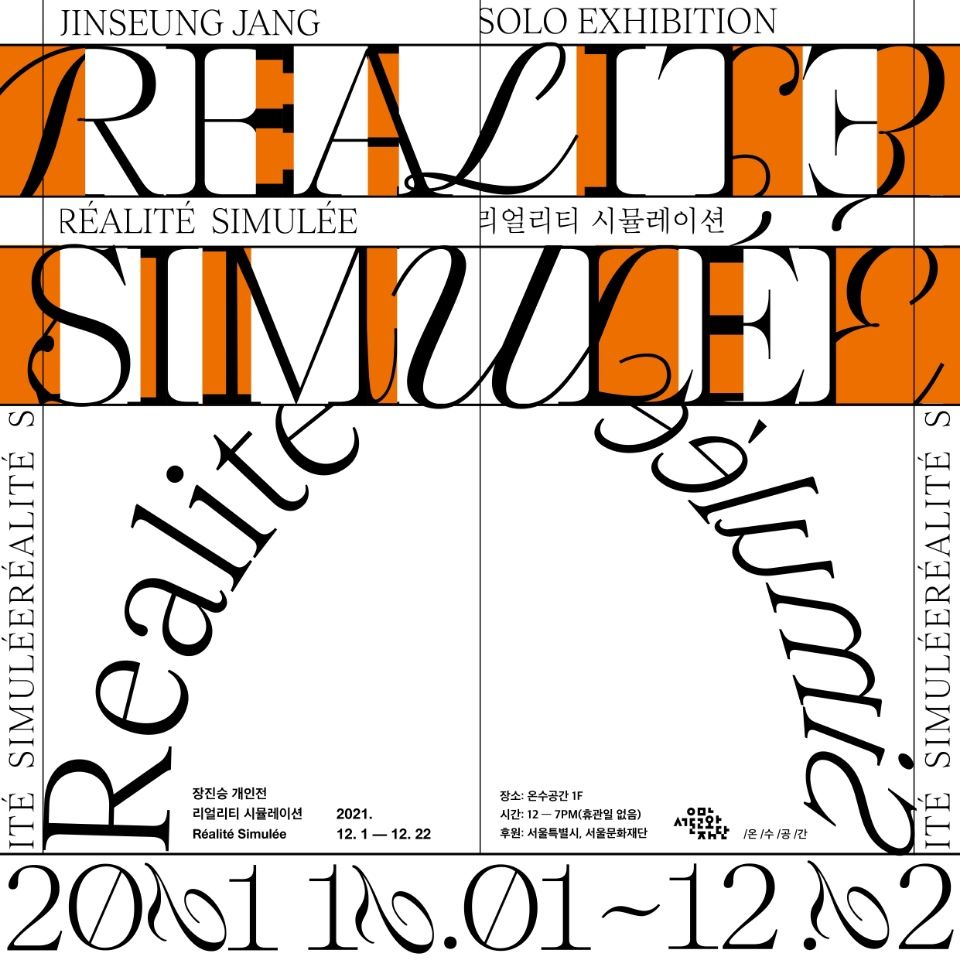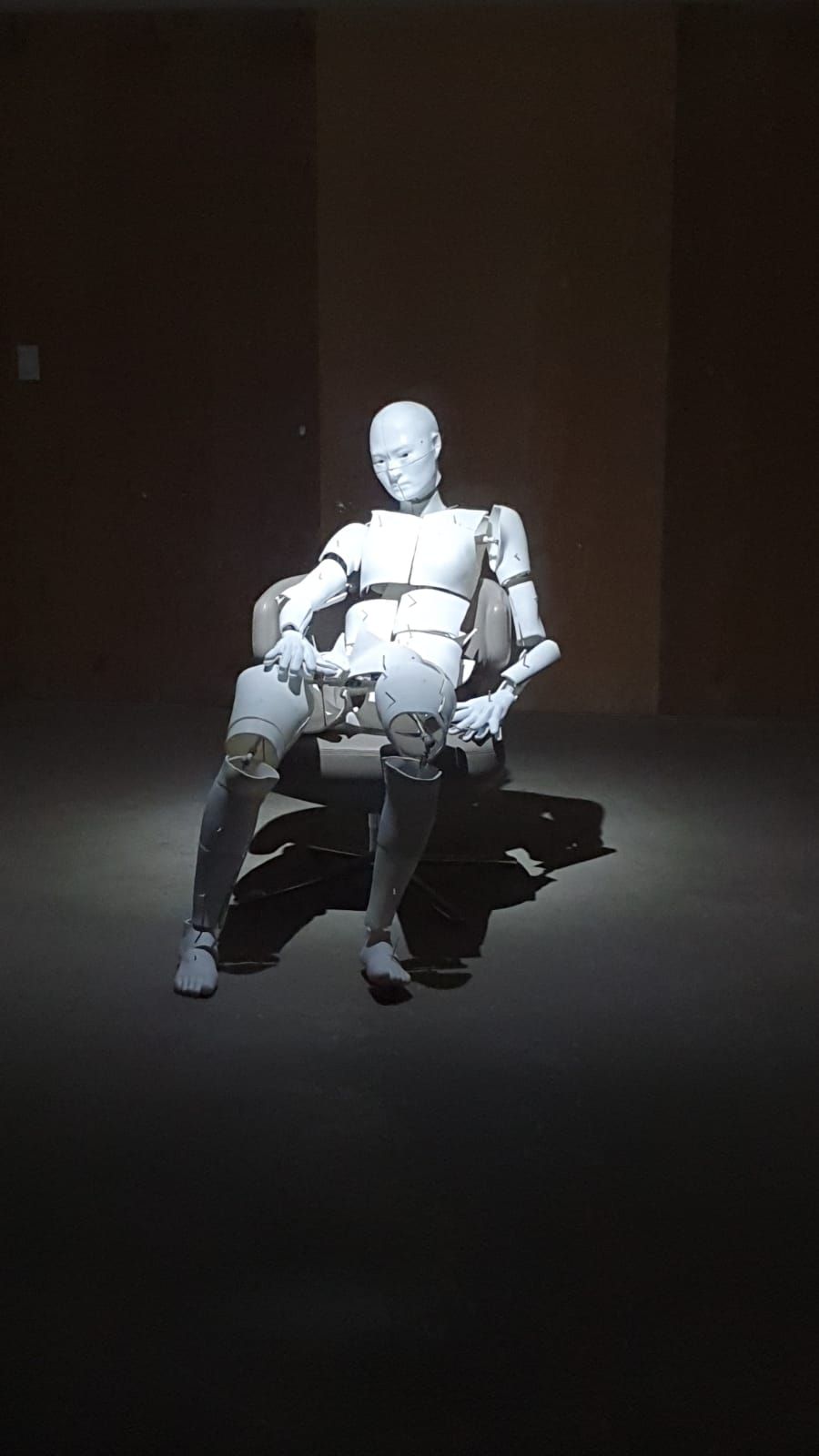Jinseung Jang
Réalité Simulée
Onsu Gonggan
376-7 Seogyo-dong, Seoul, South Korea
2021.12.1. - 2021.12.22
The simulation argument goes, that we live in a simulation within a simulation, and at some point, any perceivable notion of reality will just disappear. Jinseung Jang visualises data by interrogating the information that represents our physical existence from the viewpoint of the future, where form and matter, reality and simulation can no longer be distinguished. In Réalité Simulée, missions to re-define the “real", and to re-recognise “real body” are promoted by Regenerative Skin Link System (RSLS), an enterprise that aims to diversify, localise and regenerate the data body. Through a process-driven exploration that is rooted in his design background, Jang’s modes of expression span moving image, sculpture, and fictioning in an innovative, transdisciplinary approach.
Jang’s investigation into machine vision and the materiality of informatics began with his project Face De-Perception (2017), through which a biometric data archive was built by calculating and tracking the audiences’ faces. Subsequently, (Miss) Understood (2017) documented the gaze of the machine featured in Face De-Perception, as the machine turned itself toward the audience as the Other. The reality of the COVID-19 pandemic has certainly made facial recognition surveillance impossible to operate due to the adoption of face covering, and public health is protected by biopower that governs bodies in the ways in which our intimate encounters are mediated by touching at a distance through droplets, sights, sounds, platforms, machines, and prescribed social behaviours.
Touching at a distance is the condition of our embodiment and knowing what can or cannot be touched is a form of embodied social intelligence. The baby’s fantasy of having a common skin with the mother is the concrete starting point for a development that through the prohibition on touching, leads to the experience of individuation. Building on Freud’s idea that the ego is first and foremost a body ego and that the psychic phenomena are always embodied, psychoanalyst Didier Anzieu sees that the ego encloses the psychic much as the skin encloses the body. He introduced the term "skin-ego" in 1974 to designate a mental representation the child forms on the basis of the surface experience of its body. The skin thus is a container for the ego, and the skin-ego registers traces of communication and manages inter-sensorial correspondence, and functions as a protective shield that maintain thoughts, ideas and affects.
Skin as a site concerns boundaries that create the distinctions between inside and outside, past and future. In a world where we suffer from an absence of limits, with seamless convergence that blurs the boundaries of the real and virtual, RSLS’ customisable skin allows one to embrace embodied materiality. This materiality of the personalised, replaceable skin makes it possible to escape the claims of representation and identity. And from the outside, it seems to offer an understanding of multiplicity, and a diversity that exceeds categories of identifiable difference.
Social prejudices and machinic discrimination are major concerns throughout Jang’s work. The film Decennium Series (2020) (a collaboration with Hunhee Lee) features three episodes set in the near future. One of the episodes focuses on the event where racism is irradicated by a bioengineering technology that alters the colour of people’s skin. Subsequently, Near Future Myth Souvenir Series (2021) staged coloured toy figures to commercialise the colourful skin-changing revolution. The customisable skin offered by RSLS can "potentially" transform the skin to a site of alterity. In the two front galleries, Réalité Simulée presents the early prototypes of the skins and body parts with an opaque outlook. They are produced through a rigorous process of 3D scanning and measuring, and give an illusion of opacity that ‘protects the Diverse.’[1] In a way, the process of regenerative skin is still reducing people to parsable data as enclosed in the data cabinets, and switching them to commercial standards of identification. The quantifiable body is always subject to technological control, and DNA sequencing and genomics operate through global protocols that aim to solve today’s crises of locatability and identification. These technologies gain industry support in a time of globalised neoliberal control, which subsumes identity and difference into cybernetic governance. This newfound embodied materiality must not be mistaken as embodied subjectivity.
‘If I fall, will I be dead?’, the simulation of a bot asks In Deluded Reality (2021). The bot is caught in a space of in-between, unable to locate their body, but quickly recognises the place is the factory floor that birthed their material body. With the ability to predict steps ahead, the bot takes the leap, swims across the water, only to have their access denied on the other side. And it seems that all these oneiros are happening whilst they are sitting across from their own reflection on a monitor, just like Zhuang Zi’s butterfly dream. Achille Mbembe conceives the notion of necropolitics as the political making of spaces and subjectivities in an in-between of life and death. The colony, the slavery plantation and trade are the origins of necropolitical practices where vast populations are subjugated to conditions of life in the state of living dead. Necropolitcs entails a necroeconomy, and the most illustrative examples would be the denying of climate crisis and the privatisation of public services. Réalité Simulée presents us with a regenerative futurism where we never die, exist in-between, and plaster over the deteriorated body and soul with rendered skin. Is the soul – the self or the ego – still inside the artificial skin? The skin-ego is supposed to distinguish what belongs to the self and what does not, to differentiate between one’s own wishes, and those of other people, to demarcate the inner reality from the reality of the biological body and the outer world.[2] Nevertheless, the skin is this interface – the sheet that makes up the ego, with reference to computing terms.
If the predictions of the future are always almost untrue, what Réalité Simulée offers is an imagination, rather than a prediction.
--
[1] Edouard Glissant and Pierre Jores, “From Introduction to a Poetics of the Diverse”, An International Poetics Symposium, Vol. 26, No1, 1999, pp.119-121
[2] Andrzej Werbart, “The Skin is the Cradle of the Soul”: Didier Anzieu on the Skin-Ego, Boundaries, and Boundlessness, Journal of the American Psychoanalytic Association, 2019;67(1), pp.37-58
Joni Zhu

